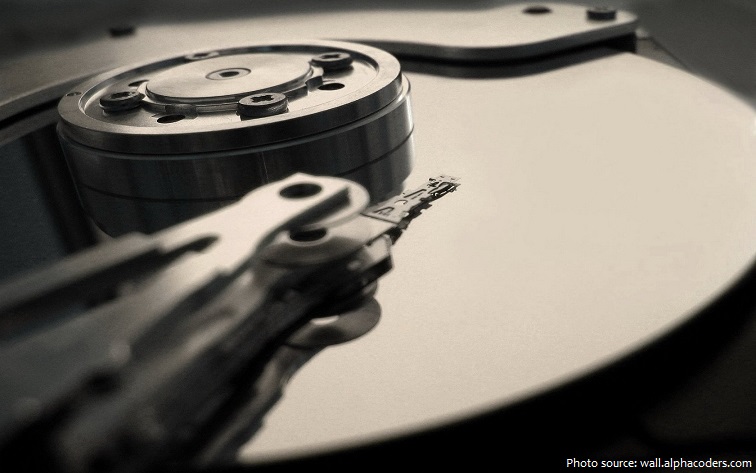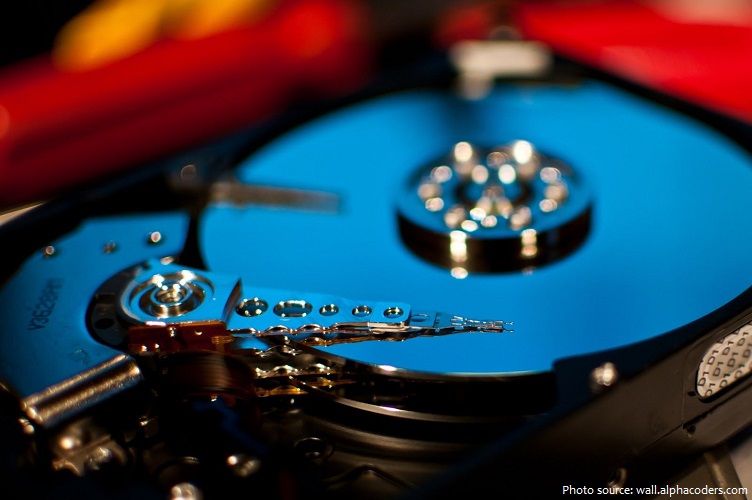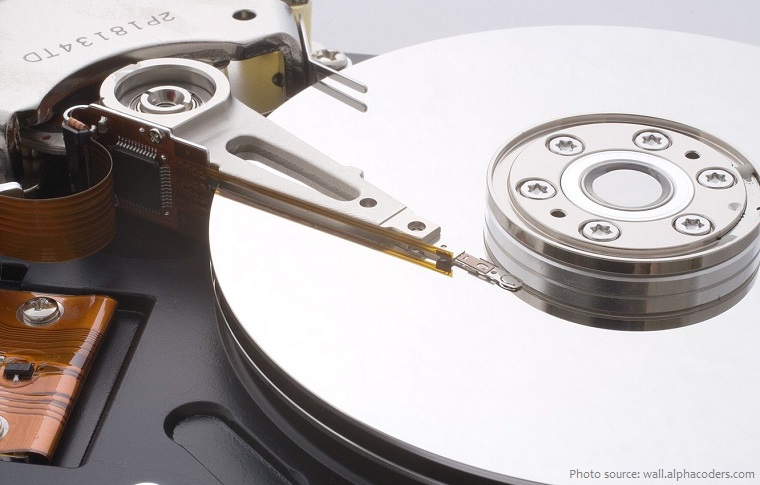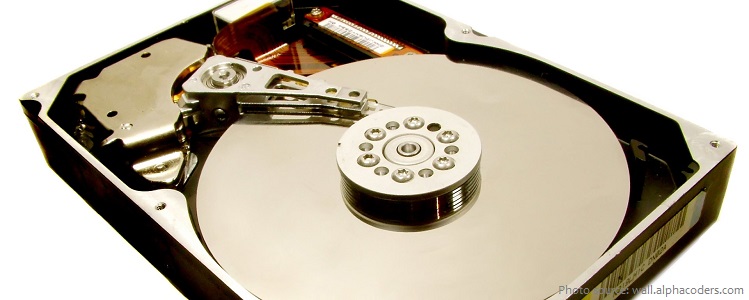
A hard drive is a piece of hardware used to store digital content and data on computers.
Every computer has an internal hard drive, but you can also get external hard drives that can be used to expand the storage of a computer.
It contains one or more platters, housed inside of an air-sealed casing. Data is written to the platters using a magnetic head, which moves rapidly over them as they spin.
A small electromagnet writes a binary digit (1 or 0) by magnetizing tiny spots on the spinning disk in different directions and reads digits by detecting the magnetization direction of the spots.

The hard drive is sometimes referred to as the “C drive” because Microsoft Windows, by default, designates the “C” drive letter to the primary partition on the primary hard drive in a computer.
While this isn’t a technically correct term to use, it is still prevalent. For example, some computers have multiple drive letters (e.g., C, D, and E) representing areas across one or more hard drives. The hard disk
drive also goes by the name HDD (its abbreviation), hard drive, hard disk, magnetic hard drive, mechanical hard drive, fixed drive, fixed disk, and fixed disk drive.
The primary characteristics of an HDD are its capacity and performance. Capacity is specified in unit prefixes corresponding to powers of 1000: a 1-terabyte (TB) drive has a capacity of 1,000 gigabytes (GB; where 1 gigabyte = 1 billion (109) bytes).

Regardless of what it’s called, the primary hard drive typically contains the root folder of the operating system used.
Introduced by IBM in 1956, HDDs were the dominant secondary storage device for general-purpose computers beginning in the early 1960s. HDDs maintained this position into the modern era of servers and personal computers, though personal computing devices produced in large volume, like cell phones and tablets, rely on flash memory storage devices.
During the first several decades of developing hard disk drives, IBM was the leading innovator: in 1961, it invented heads for disk drives that “fly” on a cushion of air or on “air bearings.” In 1963 it came up with the first removable hard drive, 1311, which has six 14-inch platters and holds 2.6MB. In 1966 it introduced the first drive using a wound-coil ferrite recording head. In 1973, IBM introduced the 3340 or Winchester Direct Access Storage Facility. The smaller and lighter 3340 marked the next natural evolutionary step in hard disk storage.

Most HDDs in the early 1980s were sold to PC end users as an external, add-on subsystem. The subsystem was not sold under the drive manufacturer’s name but under the subsystem manufacturer’s name such as Corvus Systems and Tallgrass Technologies, or under the PC system manufacturer’s name such as the Apple ProFile. The IBM PC/XT in 1983 included an internal 10 MB HDD, and soon thereafter internal HDDs proliferated on personal computers.
External HDDs remained popular for much longer on the Apple Macintosh. Many Macintosh computers made between 1986 and 1998 featured a SCSI port on the back, making external expansion simple. Older compact Macintosh computers did not have user-accessible hard drive bays (indeed, the Macintosh 128K, Macintosh 512K, and Macintosh Plus did not feature a hard drive bay at all), so on those models external SCSI disks were the only reasonable option for expanding upon any internal storage.
In 1998 IBM announced its Microdrive, the smallest hard drive to date, designed to fit in a CompactFlash (CF) Type II slot. It was launched in 2 models — 170 MB and 340 MB.

Unit production peaked in 2010 at about 650 million units and has been in a slow decline since then.
By 2012 almost all the world’s hard drives were being produced by only three manufacturers – Seagate, Western Digital (which acquired Hitachi) and Toshiba, acquiring Fujitsu’s hard drive division in 2009.
More than 224 companies have produced HDDs historically, though after extensive industry consolidation most units are manufactured by Seagate, Toshiba, and Western Digital.
HDDs are being superseded by solid-state drives (SSDs) in markets where their higher speed (up to 4950 megabytes) (4.95 gigabytes) per second for M.2 (NGFF) NVMe SSDs, or 2500 megabytes (2.5 gigabytes) per second for PCIe expansion card drives), ruggedness, and lower power are more important than price, since the bit cost of SSDs is four to nine times higher than HDDs. As of 2016, HDDs are reported to have a failure rate of 2–9% per year, while SSDs have fewer failures: 1–3% per year. However, SSDs have more un-correctable data errors than HDDs.

The highest-capacity HDDs shipping commercially in 2022 are 20 TB.
The world’s smallest hard drive measures just 2.16 cm (0.85 in) across. It was created by Toshiba (Japan) and announced at CES in Las Vegas, Nevada, USA in January 2004.
The largest platters used in a hard drive were the 48-inch (121-cm) disks mounted in the Librascope Disk File. Only two of these hard drives were ever produced. One was installed at the Stanford University AI Lab in 1967, the other at the University of California’s Lawrence Livermore National Laboratory. Each drive included six of these platters, weighed an astonishing 5,200 lbs (2,358 kg) and held 48 MB of data.
The largest collection of hard disc drives belongs to Stefan Springer (Germany) and consists of 762 as of 12 February 2012, in Nürtingen, Baden-Württemberg, Germany. Stefan Springer started his collection in 1992 whilst at school. Including duplicate and defective hard disc drives, the overall collection consists of 1,450 hard disc drives.